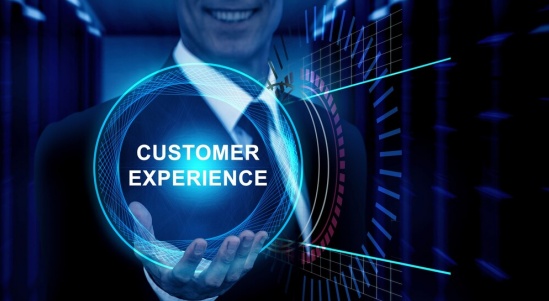- Resources
- What is Customer Experience Automation?
What is Customer Experience Automation?

Providing great customer experiences is vital for business growth, but ensuring consistency in CX delivery while scaling up may pose a lot of challenges. You can’t solely rely on manual processes when you are growing; not only does it increase the chances of errors, but it also causes agent burnout, ultimately impacting overall efficiency. This can lead to negative experiences and potential churn. This is where customer experience automation (CXA) can be your biggest asset.
Businesses can overcome these hurdles by intelligently automating and digitizing key CX workflows. Customer experience automation offers a solution by automating repetitive tasks, allowing teams to focus on complex needs and reducing errors. CXA tools like AI chatbots and automated email campaigns can vastly improve communication with your clients and prospects, enabling you to deliver personalized services and ensure a smoother end-to-end customer journey.
Ready to begin with CXA? Continue reading to discover more about customer experience automation, including its benefits and how to implement it in your firm.
In this article, we will explore:
- 1. Customer Experience Automation (CXA) Meaning
- 2. Importance of CXA
- 3. Benefits of Customer Experience Automation
- 4. What are the Elements of CXA?
- 5. Applications of CXA
- 6. How Can Companies Implement Customer Experience Automation?
- 7. How Does Automating Customer Experience Elevate Customer Service and Experience
Customer Experience Automation (CXA) Meaning
CX automation enables firms to automate one-on-one customer engagement across the customer lifecycle, making communication efforts more timely and tailored. Instead of having service personnel handle day-to-day client interactions, you may employ automation solutions to reduce human interactions while doing the heavy lifting for your team.
To implement an automated customer experience model, you must first identify critical repetitive tasks throughout the customer lifecycle that may cause bottlenecks, frustrations, or delays. Then, you develop programs to assist with their resolution.
CXA can transform slow, difficult-to-scale tasks prone to delays and human mistakes into positive interactions that assist customers in finding solutions rapidly. For example, Poonawalla Fincorp used Ozonetel’s CX automation platform to reduce conversion times and automate 50% of customer queries. Moreover, the company witnessed a 3X increase in conversions due to significantly reduced lead response times.
Importance of CXA
As customer experience becomes a key differentiator, automation becomes critical in delivering exceptional engagement and maintaining a competitive edge. According to Salesforce’s State of the Connected Customer study, a staggering 85% of buyers place equal emphasis on customer engagement as they do on product quality when evaluating companies.
Furthermore, the rapid shift towards digital channels has reached a tipping point, with 58% of consumers planning to continue doing most of their shopping online and 80% of customers expecting to conduct business online, aligning with Gartner’s prediction that 80% of interactions will occur through digital channels by 2025.
Companies must leverage data, analytics, and automation to keep up with this digital transformation and retain loyal customers. Customer experience automation can help overcome the complexities of the buying cycle, such as longer decision-making processes, multiple stakeholders, and highly specific needs and goals.

In fact, ActiveCampaign’s CXA Impact Report found that 44% of companies using customer service automation have more time to engage with customers, contributing to better experiences and repeat business.
Benefits of Customer Experience Automation
Studies show that implementing CXA can lead to a dramatic increase in customer leads (110%), deal win rates (92%), and overall sales effectiveness (109%). But the positive impact goes deeper. Research suggests that brands excelling in customer experience, particularly in areas like responsiveness, expertise, time saved, and reduced hassles – all areas CXA can improve – achieve higher customer satisfaction and loyalty.
A few more benefits of implementing CX automation include:
Personalized Services
CXA tools collect and analyze data on customer interactions, providing valuable insights into feedback and pain points. These insights allow you to make informed decisions and improve your services to cater to your customers’ needs better.
Additionally, automation allows you to tailor customer interactions, recommendations, and targeted advertising based on their behavioral data, ensuring they receive relevant and personalized experiences across multiple channels.
Consistency
CXA streamlines customer communication and interactions by following predefined processes, ensuring consistent quality across all touchpoints. This consistency builds trust, meets customer expectations, and minimizes errors that could potentially drive away existing and prospective customers, maintaining a professional and organized brand image.
24/7 Customer Support
AI-powered chatbots and virtual assistants can manage common customer queries and issues around the clock, instantly providing accurate responses without human intervention. This ensures that your customers get prompt assistance, regardless of the time or day, eliminating frustrating wait times. Additionally, automation tools offer self-service options, empowering customers to check order statuses, explore product details, or validate their eligibility for services, fostering a sense of independence and convenience.
Cost Savings and Profitability
CXA minimizes operational costs by automating tedious and repetitive tasks such as data entry, customer support, and appointment scheduling. This frees up your human agents to focus on value-adding or profit-driving activities. Moreover, by analyzing customer behavior, customer experience automation can suggest relevant products or services, increasing upselling and cross-selling opportunities and ultimately driving revenue growth.
What are the Elements of CXA?

CX automation is the practice of using technology to streamline and optimize the interactions between a company and its customers across various touchpoints. It is a broad concept covering various specific programs and activities. Here are the key components of an effective customer experience automation program:
Orchestration
Orchestration involves coordinating multiple customer interactions across different channels to create a cohesive and unified journey. It involves using customer data to determine the next best action and guiding the customer through a relevant and contextual experience. For example, if a customer abandons their online cart, orchestration might trigger an automated email reminder or a retargeting ad, ensuring a smooth and personalized experience.
Segmentation
Segmentation involves grouping customers based on shared characteristics, behaviors, or preferences. Businesses can tailor their messaging, offers, and experiences by dividing customers into segments to better resonate with specific groups. For instance, a clothing retailer might segment customers based on age, location, or purchase history, enabling them to deliver targeted promotions and product recommendations.
Personalization
Personalization is the cornerstone of customer experience automation, as it ensures that each customer receives a tailored experience based on their needs and preferences. This can range from addressing customers by name in communications to offering personalized product recommendations or tailored content. A great example is Netflix’s personalized homepage, which suggests shows and movies based on an individual’s viewing history and preferences.
Automation
Automation enables businesses to scale their personalization efforts and deliver consistent experiences across various touchpoints. Companies can streamline their operations by automating processes such as lead nurturing, customer onboarding, or post-purchase follow-ups while ensuring a seamless and efficient customer experience. For instance, an e-commerce company might automate order confirmation emails, shipping notifications, and post-purchase surveys.
Applications of CXA
Unlike point solutions that create data silos or all-in-one platforms that force you to pay for unnecessary functionality, CXA connects best-in-class tools and provides a unified view of the customer across your organization. Here are the key applications of CX automation:
CXA for Marketing
With CXA, your marketing team can engage with each unique contact as if they have a personal marketer dedicated to them. You can create highly personalized campaigns that connect with the entire customer lifecycle by leveraging a 360-degree view of each customer’s preferences, behavior, and interactions. From targeted email nurturing sequences to tailored social media ads, CXA enables your marketing efforts to be laser-focused and relevant, driving higher engagement and conversion rates.
CXA for Sales
Interacting with every potential customer as if you’ve known them for years makes the sales process more authentic and effective. Customer experience automation gives your sales team full visibility into each customer’s unique needs, pain points, and preferences. This allows them to tailor their campaigns and offerings accordingly. By leveraging customer data and automation, your sales reps can prioritize outreach, recommend the right products or services, and build genuine relationships that lead to better results.
CXA for Service
Your account managers and customer service representatives often have the deepest understanding of your customers. CXA empowers them to leverage this expertise to improve messaging, predict potential issues, and prioritize outreach based on the greatest need. With a unified view of each customer’s history, preferences, and interactions, your service team can proactively address concerns, provide personalized recommendations, and deliver exceptional support experiences that foster loyalty and advocacy.
How Can Companies Implement Customer Experience Automation?

While the advantages of CX automation are numerous, delivering exceptional CX consistently can be a challenge, especially as customer expectations continue to rise. However, leveraging technology to streamline processes and personalize interactions can create a smoother and more satisfying journey for your customers.
So, how exactly can you implement customer experience automation to achieve these benefits? Let’s delve into some practical strategies.
Clarify Your Objectives
Begin by conducting a comprehensive internal audit to identify areas for improvement within your customer-facing operations. Evaluate factors such as cost-effectiveness, customer satisfaction levels, ease of use, and overall operational efficiency. This assessment will help you prioritize the aspects that require immediate attention through automation, ensuring your efforts are focused and aligned with your business goals.
Develop Customer Insights
Truly understanding your customers is the cornerstone of an effective CXA strategy. Leverage data segmentation techniques to divide your customer base into different groups on the basis of shared characteristics, behaviors, or preferences. This could include demographics, purchase history, or engagement patterns.
Once you’ve identified these segments, create detailed customer personas that capture their unique needs, motivations, and pain points. These insights will guide the personalization and tailoring of your automated experiences.
Select the Appropriate Tools
With a wide array of CX automation tools available in the market, it’s crucial to choose solutions that align with your specific requirements. Consider factors such as your company size, the scale of your customer base, and the demographics you serve.
Determine whether you require automation for internal operations, customer-facing technologies like chatbots, or a combination of both. You can also explore free trials and request tool demonstrations to evaluate their functionality and suitability before committing.
Leverage Customer Data
CXA thrives on data. If you’re a small or newly established business, you may have limited customer data available initially. However, consider implementing a cloud data warehouse to collect and analyze customer data in real-time as your business grows.
This will give you important insights into customer behaviors, preferences, and journeys, informing your personalization and automation strategies. A cloud data warehouse migration may be necessary for larger organizations to consolidate and integrate customer data from various sources, providing a comprehensive view.
Map Customer Journeys
Successful CXA relies on understanding the end-to-end customer journey, from initial interaction with your marketing materials to post-purchase support and beyond. Map out these journeys, identifying key touchpoints and opportunities for automation.
Design automated workflows that address the customer’s needs at each stage, such as welcome screens, personalized email sequences, and automated feedback bots. This approach ensures a seamless and consistent experience throughout the customer lifecycle.
Integrate with Existing Systems
To achieve a truly cohesive customer experience, it’s essential to integrate your new CX automation tools with your existing technology stack. Identify points in the customer journey where data must flow seamlessly between systems, such as support agents accessing customer information from the CRM during calls or marketing teams leveraging purchase data for targeted campaigns. Effective integrations eliminate data silos and ensure a smooth, uninterrupted experience for both customers and employees.
Invest in Employee Training
While CXA tools are designed to be user-friendly, comprehensive training is crucial to ensure your employees understand and effectively utilize these new technologies. Conduct interactive training sessions that simulate real-world scenarios, explaining how to use the tools and the rationale behind their implementation. This will foster buy-in, encourage adoption, and equip your team with the skills necessary to deliver exceptional automated experiences.
Prioritize Data Privacy and Security
CX automation relies heavily on customer data, making data privacy and security paramount. Implement robust measures such as multi-factor authentication, secure cloud storage, and regular user training on data handling best practices. Ensure that your chatbots, websites, and social media channels adhere to the highest security standards to protect your customers’ sensitive information and maintain their trust.
How Does Automating Customer Experience Elevate Customer Service and Experience

Traditional customer service methods can often be slow and frustrating, leading to customer dissatisfaction. Here’s where automation shines. By strategically incorporating automation into the CX, businesses can improve customer service and the overall experience in many ways. Let’s explore how this powerful approach can transform your customer interactions.
Automated Email Campaigns
Personalized and timely email campaigns are crucial for engaging customers throughout their journey. With automated email campaigns, you can effortlessly deliver targeted messages based on predefined triggers and user actions.
For instance, an abandoned cart email can be automatically sent to customers who left items in their virtual shopping cart, reminding them of their intentions and offering incentives to complete the purchase. Lead nurturing campaigns can nurture potential customers with relevant content, while win-back emails can re-engage inactive customers with compelling offers.
Automated Voice Conversations
Taking automation a step further, advanced technologies such as large language models and natural language processing (NLP) can automate entire phone conversations. For example, AI-powered voice assistants trained in your business information and customer data can answer incoming calls, gather customer details, qualify leads, and seamlessly guide customers to the appropriate human agent when necessary. This empowers your support team to focus on more complex inquiries while ensuring a consistent and efficient customer experience.
AI-Powered Website Chat
Chatbots powered by artificial intelligence (AI) and machine learning (ML) can revolutionize customer support processes. These virtual assistants can leverage your website’s content, product information, and customer data to provide fast, accurate, and natural responses to routine inquiries. Chatbots significantly reduce wait times by handling multiple customer conversations simultaneously, ensuring your customers receive prompt assistance and a seamless experience.
Automated Ticketing and Routing
Streamlining the ticketing and routing process can significantly improve customer service efficiency. Automation allows you to categorize and prioritize customer inquiries, assign tickets to the appropriate agents, and route customers to the right department or resource based on their specific needs. Interactive voice response (IVR) systems can further enhance this process by guiding callers through pre-recorded prompts and automatically directing them to the most suitable support agent.
Conclusion
As your company grows, providing a consistent and memorable client experience is critical to customer retention and business success. And CX automation solutions are great tools for firms trying to improve customer experiences and increase loyalty. Companies that use a suitable platform can save time and money, enhance client retention, and deliver quick, reliable assistance.
One such tool is Ozonetel’s CX Hub, a powerful platform that leverages automation to deliver personalized customer experiences across every touchpoint. Through a single interface, it efficiently manages all communication channels, including phone calls, SMS, WhatsApp, and chatbot conversations. Additionally, it provides agent-assist features that empower agents with real-time customer sentiment analysis and intent recognition, allowing them to handle complex issues effectively while personalizing conversations.
Want to see what Ozonetel can do for your company? Sign up today for a free 7-day trial.
Prashanth Kancherla
Chief Operating Officer, Ozonetel Communications
Over the past decade, Prashanth has worked with 3000+ customer experience and contact center leaders...
Chief Operating Officer, Ozonetel Communications
Over the past decade, Prashanth has worked with 3000+ customer experience and contact center leaders to comprehensively understand the need for effective and efficient customer communications at every step of their journey with a brand. Deeply embedded in today’s CCaaS ecosystem, he has been instrumental in Ozonetel's growth and contributed in various roles including product management, sales, and solution architecture.







